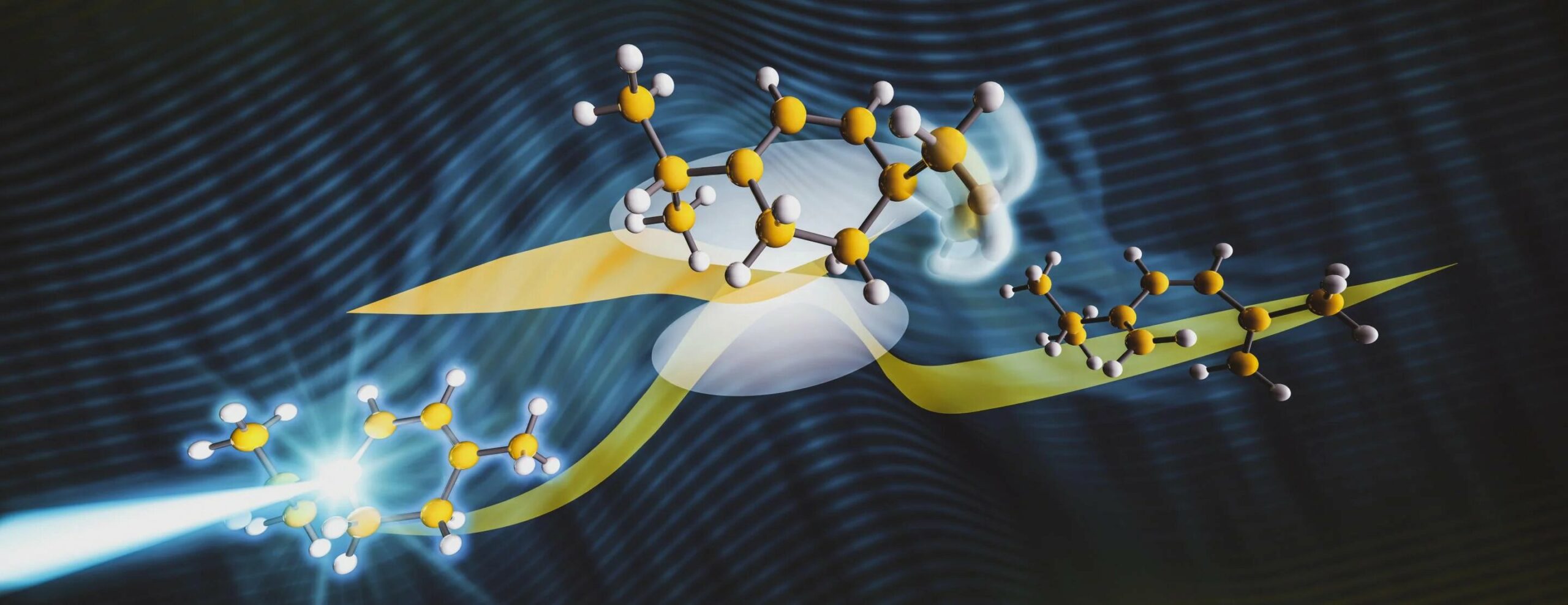Scientists have used a high-speed “electron camera” and quantum simulations to capture the photochemical “transition state” of a molecule’s atoms during a ring-opening reaction in α-terpinene. This marks the first time scientists have precisely tracked molecular structure through a photochemical ring-opening reaction, which occurs when light energy is absorbed by a substance’s molecules. The findings, published in Nature Communications, could help us further understand similar reactions with vital roles in chemistry and biology, such as vitamin D production in our bodies.
Methodology and Results
Transition states generally occur in chemical reactions triggered by heat, and are a point of no return for molecules involved in a chemical reaction. As the molecules gain energy to transform into new molecules, they rearrange themselves into a fleeting configuration. Until now, no method existed that was sensitive enough to capture these fleeting states, which last for only millionths of a billionth of second.
At SLAC’s MeV-UED instrument for ultrafast electron diffraction, the researchers sent a high-energy electron beam through a gas to measure distances between the atoms within the molecules in the gas. By taking snapshots of these distances at different intervals after an initial laser flash, scientists were able to create a stop-motion movie of the light-induced atomic rearrangements in the molecules.
The researchers discovered that some parts of the atomic rearrangements happen earlier than others, which provides an explanation for why the specific stereochemistry is created by the reaction. This is important for understanding the quantum mechanics underpinning photochemistry. Comparing the experimental results with quantum simulations of the reaction allowed the team to get a highly accurate picture of how molecules behave and benchmark the predictive power of theoretical and computational methods.
Co-author and SLAC scientist Thomas Wolf said that transition states tell us a lot about how and why reactions happen. Investigating critical configurations in photochemical reactions could lead to a better understanding of reactions with key roles in chemistry and biology. By using diffraction techniques, scientists can now look at specific characteristics of such reactions.
In a previous study of a related reaction, MeV-UED allowed the team to capture the coordinated dance between electrons and nuclei, providing the first direct confirmation of a half-century-old set of rules about the final product’s stereochemistry. With this new research, scientists can start answering questions about why and how reactions happen, which is incredibly exciting for Wolf.
Overall, this research shows that the use of high-speed “electron cameras” and quantum simulations can help us better understand the behavior of molecules during chemical reactions triggered by light. This understanding could lead to further advancements in chemistry and biology, including the production of important substances like vitamin D.


Leave a Reply